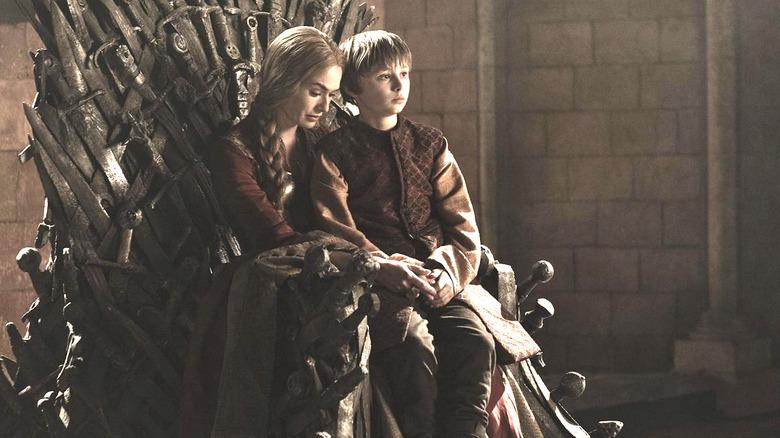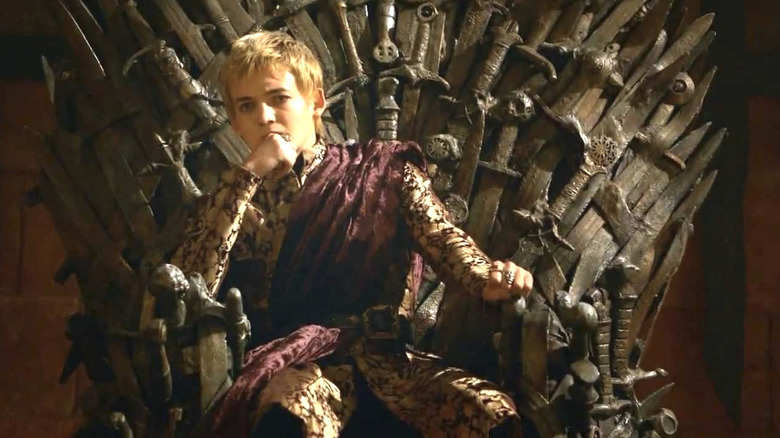Why Queen Elizabeth Refused To Sit On The Iron Throne During A Game Of Thrones Set Visit
In 2015, Queen Elizabeth visited the set of the Iron Throne, which was located near Belfast in Northern Ireland. Reporters caught a few pictures of her standing next to the gray pointy chair, but none of them caught a picture of her sitting on it. That's because she never did sit on it, even though she totally could've if she'd really wanted to, and the photo almost certainly would've gone viral.
In a later interview on "Late Night with Seth Meyers," the "Game of Thrones" showrunners reflected on the Queen's visit to their show's set and explained why she'd declined the opportunity: "Apparently the Queen of England is not allowed to sit on a foreign throne," explained David Benioff. "This is an esoteric rule we didn't know about until that moment."
Does "foreign throne" include fictional thrones? Apparently so. This isn't an official law written down anywhere, so much as a custom that's still respected even long after kings and queens had any real power in our world. The queen declining to sit on the Iron Throne is the royal equivalent of declining to rest your elbows on the table. It's simply the polite thing to do.
The Iron Throne is famously dangerous
Then again, it's possible that the Queen's reluctance had more to do with her own safety than her appreciation of tradition. The Iron Throne in the books is famous for being very sharp and uncomfortable, much to the chagrin of every ruler who's had to sit in it. Throughout "House of the Dragon" season 1, part of what accelerates King Viserys' health woes is the constant cuts he gets from the throne, some of which end up infected. Even the young, spry Joffrey Baratheon in the original show cuts himself a few times; if the Tyrells didn't kill him, I'm sure that throne would've gotten around to it eventually.
Author George R. R. Martin wrote the Iron Throne as pointed for a few reasons. The most obvious one is that a throne made out of sharp swords looks cool. The second reason is that it makes for a fine metaphor for power; so many characters are willing to sacrifice everything for a shot at the throne, only to find themselves more miserable than ever when they finally get it. The third reason is that a pointy throne provides a great opportunity for foreshadowing. In "Fire & Blood," for instance, the first sign that Queen Rhaenyra's reign is doomed is when she cuts herself mere seconds after first sitting on the throne. It's a bad omen, one interpreted by some of the characters as a sign that she's not fit to rule.
The set version of the Iron Throne is, of course, far safer than the one in the books, but it's still not comfortable to sit in. Queen Elizabeth likely took one look at it and decided that, as cool as the chair may look, sitting on it just wasn't worth the back pain.

